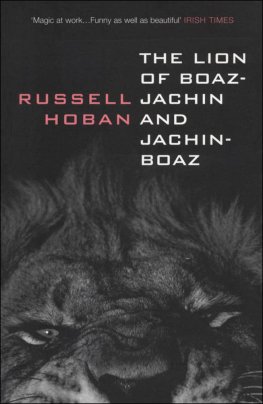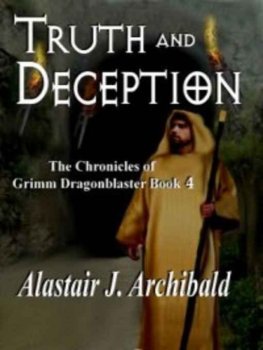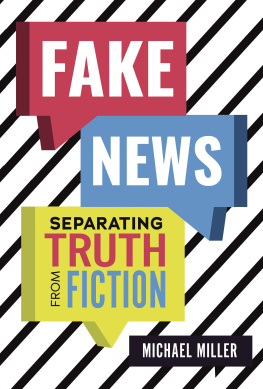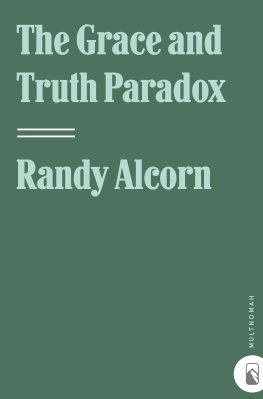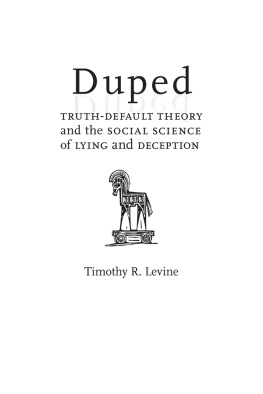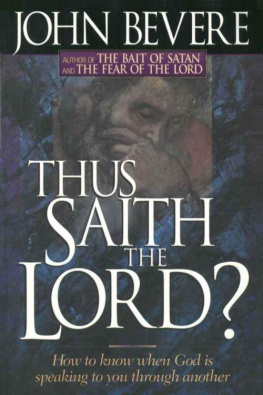Swords, Plowshares, and the Great Deception
An Analysis of the Modern Boaz and Jachin
Thomas James Klancee
ISBN 978-1-64299-015-7 (Paperback)
ISBN 978-1-64299-016-4 (Digital)
Copyright 2018 by Thomas James Klancee
All rights reserved. No part of this publication may be reproduced, distributed, or transmitted in any form or by any means, including photocopying, recording, or other electronic or mechanical methods without the prior written permission of the publisher. For permission requests, solicit the publisher via the address below.
Christian Faith Publishing, Inc.
832 Park Avenue
Meadville, PA 16335
www.christianfaithpublishing.com
Printed in the United States of America
Table of Contents
Dedication
This book is dedicated to Dimitri Khalezov without whose work, it would have been much more difficult and far less likely.
Foreword
For there shall rise false Christs and false prophets, and shall show great signs and wonders; in so much that, if it were possible, they shall deceive the very elect.
(Matthew 24:24)
W hereas the Great Deception to which Matthew refers is broad and multifaceted, it has its high points, not the least of which was the design, construction, and destruction of the Twin Towers of the World Trade Center to which the title refers.
There is an official story of what happened on September 11, 2001, which is not merely absurd but physically impossible in numerous ways. While many recognize this, it is much easier to say what did not happen than to explain what did.
Discerning the What, how, who, and why of 9/11 cannot begin with They would not do that before even knowing who they are nor what that was. Preconceptions confronted with conflicting observations creates cognitive dissonance in individuals. This is why people can be deceived in the first place.
It is easier to fool (deceive) people than to convince them that they have been fooled (deceived).
(Mark Twain (disputed))
Even once free of disabling preconceptions, the 9/11 researcher finds oneself mired in a morass of conflicting theories (both well-intentioned and deliberately misleading), simultaneously presenting technical issues beyond the grasp of most. To cut through all of this, it is best to start at the beginning.
The Beginning
I n the late 1950s, the DowntownLower Manhattan Association was formed to pursue urban renewal. By 1960, the association had proposed a World Trade Center on the east side of Lower Manhattan. In 1961, the Port Authority of New York and New Jersey (PANYNJ), established forty years earlier and no stranger to major infrastructure efforts, agreed to take on the project. In 1962, the WTC project was re-sited to the west side of Lower Manhattan to better benefit New Jersey interests and obtain that states approval. The architect proposed twin towers, and by 1964, it was decided to construct the tallest buildings in the world at the time.
By the 1960s, New York City was in the business of demolishing older buildings because of obsolescence or to make room for newer structures. Hence, the building codes required that a demolition scheme be provided as a precondition to new construction permit issuance.
At 412 meters high and 59 meters wide, the Twin Towers were seven times as high as wide, so it was impractical to demolish them conventionally such that the rubble pile was confined to the buildings extended footprint and it could not be toppled as it was in the middle of Lower Manhattan and surrounded by the other assets. The only place for the debris to be directed was down below ground level, but below ground level was the very bedrock that made the notion of skyscraper construction feasible.
It just so happened that in the mid-1960s, the United States of America was at the apex of its acute fascination with creating voids in bedrock.
Operation Plowshare
I n 1942, a graphite pile was constructed, demonstrating controlled chain-reaction fission of uranium. The feasibility of power generation had been demonstrated, but being wartime, the project was secret and the goal was the weapons that destroyed Hiroshima and Nagasaki in 1945.
The Atomic Energy Act of 1946 decreed all nuclear research and development the exclusive purview of the federal government and established the Atomic Energy Commission. In the late 1940s and early 1950s, public power advocates envisioned a nationwide federal power grid along the lines of the Tennessee Valley Authority, featuring federally designed and constructed nuclear generating facilities. By 1952, the USA had detonated a ten-megaton thermonuclear explosion (that being more than five hundred times the yield of the 1945 bombs) but achieved no tangible generation nor nationalization of the electric power grid.
Also in 1952, a temperature inversion in London trapped the citys smog near ground level and killed four thousand residents before the smog lifted after four days. The desirability of smog-free power generation had been underscored. In his 1953 Atoms for Peace address to the United Nations, Eisenhower promised that the United States would provide nuclear electric generation to the world despite no domestic development at that point. In 1954, the United States was shocked when the Soviet Union announced that it had completed a nuclear-generating facility and tied it into their electric grid. The consequent Atomic Energy Act of 1954 allowed private development of nuclear electric generation. Nonetheless, by 1957, the AEC, unsatisfied by nominal progress, asked Congress to fund a public relations campaign whereby nuclear explosions could be put to use for various civil works to the benefit of society. The idea was to destigmatize nuclear technology as exclusively a tool of war making (which was precisely how it was introduced in 1945.)
Founded in 1958, Operation Plowshare took its name from the Bible:
And he shall judge among the nations, and shall rebuke many people: and they shall beat their swords into plowshares.
(Isaiah 2:4)
Initially limited to the drawing board by international agreements limiting testing, Operation Plowshare hit its stride with the 3-kiloton Gnome shot in 1961 and the 104-kiloton Sedan shot in 1962. Unlike the previous military tests which were classified, the observations and measurements of these tests were made public and intended for use in the development of civil works.
The imagination and breadth of Operation Plowshare cannot be overstated. Among the concepts were the disruption of tropical storms prior to landfall, natural gas fracking, creation of underground gas and oil storage caverns, blasting a route for Interstate 40 across the Southwestern United States, excavation of canals, bays, and harbors in a myriad of locations. And no less than twenty-five proposed canal routes across Central America and Mexico to connect the oceans. Perhaps the most ambitious concept was a canal through Mexico, north of the Yucatan Peninsula. At that point, what is being considered is the shearing of a continent. Again, Operation Plowshare explored concepts with reckless abandon when considered from a twenty-first century viewpoint. To be sure, building demolition seems almost trivial compared to blasting a canal through Mexico north of the Yucatan.
The WTC Demolition Concept
S uperficially, the concept is quite simple: you blow a hole in the bedrock below a skyscraper and the building falls into the void.


